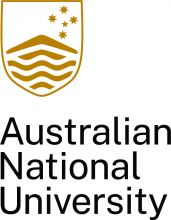Australian prime minister Scott Morrison awarded universities a central role in his country’s economic growth as he outlined the main features of the government’s A$2.2 billion (£1.2 billion) research commercialisation plan.
Addressing the National Press Club on 1 February, Mr Morrison said he wanted to “fuse” Australia’s “world-class” university research capabilities with the government’s “modern manufacturing strategy”, which is focused on six priority industries.
Research advocates have lauded the plan’s cornerstone, a A$1.6 billion commercialisation fund dubbed “Australia’s Economic Accelerator”. It would allocate promising research projects up to A$5.5 million each to help bridge the “valley of death”, where financial uncertainties stymie the commercial development of auspicious discoveries.
The most encouraging of the projects would be eligible for further investment through government science agency CSIRO’s innovation funding arm, Main Sequence Ventures, which will receive a A$150 million boost under Mr Morrison’s announcement.
He also promised A$296 million to foster cultural change in Australian research training by shepherding more doctoral students and recent PhD graduates into the private sector. This allocation, which would bankroll 1,800 industry PhDs and some 800 industry fellowships, dwarfs the A$1.1 million wrung from last May’s federal budget to fund industry placements for PhDs.
University groups said the plan demonstrated the government’s confidence in the sector. “[It] puts Australia’s research universities at the heart of the post-Covid recovery and the strategy for the nation’s economic future,” said Innovative Research Universities chair Carolyn Evans.
Group of Eight chief executive Vicki Thomson said the plan would “deliver gains for universities, business, our economy and, most importantly, the Australian population”.
The Australian Academy of Technology and Engineering said the new fund would play a role in “unlocking sovereign technological capabilities”. “However, it is also important not to neglect curiosity-driven research, which creates the ideas for new commercial opportunities,” cautioned the academy’s president, Hugh Bradlow.
Universities Australia chair John Dewar echoed the warning. “Successful commercialisation depends on the high-quality basic research that precedes it,” he said.
The National Tertiary Education Union said the new fund would not compensate for the money the government had already “pulled out” of basic research. “This money is now being redirected towards the commercialisation of research, in particular industries hand-picked by the [governing] Coalition,” said national president Alison Barnes.
“While applied research funding…is vital, our investment in curiosity-driven, pure research needs to be secured.”
Australian Research Council (ARC) records show that competitive grant funding declined by almost A$200 million annually under the first five years of the Coalition government. The newly announced money, to be delivered over 10 years, will barely offset this shortfall – let alone the billions of dollars of discretionary research funding that universities risk losing because of the pandemic’s impact on fee-paying international students.
Australian National University policy expert Andrew Norton said research projects fostered by the new commercialisation fund “may deliver some returns in the future”. But he said commercialisation was rarely a major income source for universities, having delivered about A$140 million in royalty and licensing revenue in 2020.
Professor Norton said that on an annual basis, the money announced by Mr Morrison was a “modest increase” on existing research funding and would be allocated on a “ministerial whim basis. Who knows what will happen over a decade?”
Acting education minister Stuart Robert exercised ministerial whim in denying funding to six expert-endorsed research projects late last year. Mr Robert has also directed the ARC to recruit industry representatives on to its College of Experts, which assesses research grant applications, and to earmark more funding for applied research – particularly in its six manufacturing priority areas of defence, space, resources technology, food and beverages, clean energy and medical products.
Professor Norton said the new funding announcement should not be interpreted as evidence that the government’s attitude towards universities was changing. “Funding research commercialisation and directing money away from projects that it sees as not in the national interest are consistent with each other,” he said.
The research commercialisation plan was unveiled on the same day that a veteran government functionary took the helm at the ARC. Career public servant and policy expert Judi Zielke, CSIRO’s chief operating officer and a former deputy secretary of the federal Department of Infrastructure and Regional Development, has been installed as acting ARC chief executive.
The government has also named eight universities shortlisted for funding under the first tranche of the research commercialisation plan, the “Trailblazer Universities” initiative, which was announced in November. It will support research and industry hubs championing breakthroughs in four of the six manufacturing priority areas.
Register to continue
Why register?
- Registration is free and only takes a moment
- Once registered, you can read 3 articles a month
- Sign up for our newsletter
Subscribe
Or subscribe for unlimited access to:
- Unlimited access to news, views, insights & reviews
- Digital editions
- Digital access to THE’s university and college rankings analysis
Already registered or a current subscriber? Login











